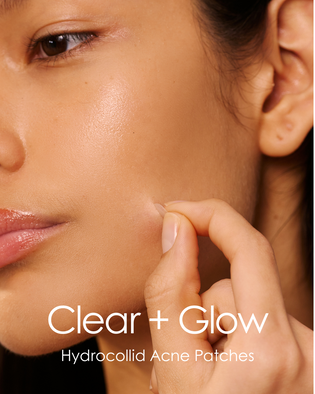
Are Infrared and Red Light Therapy Dangerous for the Eyes?
IN THIS ARTICLE:
- 01 What is Red Light Therapy?
- 02 What is Infrared Light Therapy?
- 03 What are the Benefits of Infrared Light Therapy?
- 04 What is the difference Between Red Light and Near-Infrared Light Therapy?
- 05 Can Red and Infrared Light Therapy Be Combined?
- 06 Can Red Light Therapy Cause Eye Damage?
- 07 Can Infrared Light Therapy Cause Eye Damage?
- 08 Can Infrared and Red Light Therapy Improve Eye Health?
- 09 How to Protect Your Eyes During Near Infrared and Red Light Therapy Sessions?
- 10 The Takeaway
8-minute read
Summary: Red light therapy is safe for the eyes, but it is best to avoid using it over the recommended treatment time to prevent potential eye damage. Alwuas consult with an eye doctor if you have specific eye conditions and always choose a reputable device.
Infrared and red light therapy are taking the skincare industry by storm, lauded for their anti-aging and skin rejuvenation benefits, their growth in popularity show no signs of stopping. There are emerging concerns about safety around LED devices, particularly in the context of eye health. Below we take you through each light therapy technique, their similarities, their differences and advise how to best protect our eye health while getting the most from our LED light treatments.
What is Red Light Therapy?
Red light therapy is a therapeutic skincare technology that uses light wavelengths in the range of 600-700 nm to boost mitochondrial health and deliver a range of anti-aging benefits such as smoothing fine lines, boosting the production of collagen and elastin. Red light therapy has been shown to physically slow the aging process by triggering the production of ATP (Adenosine Triphosphate). ATP or ‘mitochondrial respiration’ keeps skin cells oxygenated to prevent decline, i.e. skin aging.
What is Infrared Light Therapy?
Infrared light therapy uses light wavelengths in the range of 700-1100nm. Infrared light penetrates much deeper than red light and exists on the invisible light spectrum. Infrared light can penetrate all three layers of the skin and has even been shown to reach muscle, bone, joints, nerves and tissue to trigger healing and rejuvenation. As you can see, infrared light is an extensive therapeutic technique and has been used beyond the realm of aesthetic skincare to treat inflammation, pain management, wound healing arthritis and more. Infrared light produces myofibroblasts mature cells designed to synthesize new collagen stores.
What are the Benefits of Infrared Light Therapy?
-
Increases blood flow
-
Pain relief
-
Collagen production
-
Enhanced muscle and tissue recovery
-
Reduces inflammation to treat conditions such as arthritis
-
Stimulates mitochondria activity to promote cell oxygenation and healing
What is the Difference Between Red Light and Near-Infrared Light Therapy?
Despite the obvious differences in that red light is visible and infrared is invisible, recent studies have shown that the varying length of red and infrared wavelengths may not be the only key distinction between these therapies. A recent study conducted in the context of wound healing, shows that red and near infrared light influence different stages of collagen formation. For example, red light supports the initial production of fibroblast production while infrared light produces larger and more mature cells that create new collagen cells. In essence, red light has more of an impact at the start of the process, while infrared light has more influence at a later stage in the process by synthesizing mature cells to secrete type 1 and type 3 collagen.
Can Red and Infrared Light Therapy Be Combined?
Yes! Based on the above evidence it is clear a combination of red and infrared light therapy has powerful anti-aging benefits and supports the production of collagen at all life stages. Overall, it is a more comprehensive treatment option that not only enhances the appearance of skin but overall health and function of skin, joints, nerves, tissue and bones. This is important no matter what stage of life you are at, a preventative approach to skincare is always better than attempts to reverse signs of aging once they have manifested.
Is Red Light Therapy Dangerous For the Eyes?
We now know the powerful benefit of red light for skin health, but is red light therapy safe for the eyes? Our eyes are a very delicate and sensitive area of our body and protecting them should be a top priority. While there is no conclusive evidence that LED light is dangerous for the eyes in the same way as UV rays emitted directly from the sun, it is wise to err on the side of caution in this case by taking steps to protect your eyes during red light therapy treatments. This is particularly important if you are using a high-density LED device such as a red light panel or mask. If you are light sensitive, avoid staring directly at the LEDs for prolonged periods.
Can Infrared or Red Light Therapy Cause Eye Damage?
In a similar way to red light therapy, there is no decisive evidence in this area, however just because we cannot see infrared light, doesn't mean we should not protect our eyes from it. As mentioned, infrared light has the potential to penetrate very deep, beyond the skin and into bones and tissue. It is therefore more important to take steps to protect our eyes when using infrared light therapy devices, to avoid any damage to photoreceptors.
Can Infrared and Red Light Therapy Improve Eye Health?
While you may find claims online that red and infrared light therapy can be used to boost eye health by producing a retino-protective effect, these claims should be treated with caution. Particularly in the context of red light therapy masks and devices. Red light therapy masks for home use are typically not intended to treat the eyes. The treatment of eye conditions such as vision loss, glaucoma and optic nerve injuries with light therapy or other methods should never be attempted at home and should only be carried out under medical supervision.
How to Protect Your Eyes During Near Infrared and Red Light Therapy Sessions?
Choose a device with built-in eye protection
Devices from reputable brands will often come with built-in eye protection such as the Project E Beauty Lumamask Pro.
Use protective goggles
Many LED masks and devices will come with protective goggles which will protect against even higher-density LED devices. Always use protective goggles if you are using a handheld device.
Close your eyes
Even though our face-paced lifestyles champion productivity over all else, despite the rhetoric, you don’t have to ‘habit stack’ while using your LED light therapy mask and taking a relaxing 10 will not only protect your eyes but your mental wellbeing too.
Avoid staring directly into the LEDs for prolonged periods
Although a little direct exposure is unlikely to cause any harm, try not to stare at the device while it is powered on to prevent light sensitivity and potential harm to the eyes.
LumaLux Face | Pro LED Light Therapy Mask
Our most advanced LED mask for deeper skin renewal - fine lines, acne, hyperpigmentation, skin texture
The Takeaway: Is Red Light Therapy Dangerous For the Eyes?
So, are infrared and red light therapy dangerous for the eyes? Potentially, but the data is not clear. Evidence of long term prolonged exposure to red and infrared light bulbs is not yet known. But it is always best to avoid taking unnecessary risks by taking steps to protect our precious eyes. This is especially important if you plan to use LED light therapy devices a couple of times per week. If your device does not have built-in eye protection be sure to source protective goggles, close your eyes during the treatment and avoid staring directly into the LEDs.
Red and infrared light therapy are powerful therapeutic techniques that not only promote better skin health but overall health and wellbeing. Their impact on cell function and ability to promote anti-aging, cell rejuvenation and healing is revolutionary for human health. Like all things however, it is important to exercise caution when operating new devices to ensure you are getting the most from your treatment while protecting your overall health.
Reference:
https://www.mdpi.com/2076-3417/10/21/7878

written by Charlotte Rycroft
















Leave a comment
This site is protected by hCaptcha and the hCaptcha Privacy Policy and Terms of Service apply.